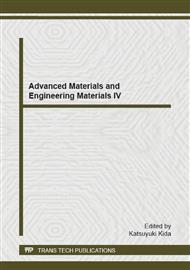p.517
p.521
p.525
p.529
p.535
p.541
p.547
p.551
p.555
Carbon Nanotubes as a Nonlinear Buckled Beam for Nanoelectromechanical Systems
Abstract:
In this paper, we examine the nonlinear nanoelectromechanical effect on a doubly clamped suspended single-walled carbon nanotube which could be used for pressure sensor. Coulomb-blockade effects will be explored and investigated. We adopt the full expression of curvature term in the elastic energy and use a modified Euler’s method to determine the nanotube’s maximum displacement in all bending regimes. We find that while the approximate solution given by Sapmaz et al. [1] underestimates the maximum displacement of the buckled nanotube in the weak bending regime, the approximate solution fails to obtain the correct maximum displacement as given by our numerical solution. Accordingly, the effect of curvature must be properly addressed for this nanoelectromechanical system to be used as an accurate sensor.
Info:
Periodical:
Pages:
535-538
Citation:
Online since:
December 2014
Authors:
Price:
Сopyright:
© 2015 Trans Tech Publications Ltd. All Rights Reserved
Share:
Citation:


